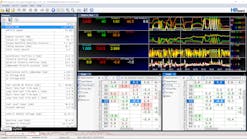Repair work on any vehicle – whether it is a motorcycle, a passenger car, or a heavy duty truck – necessitates one common practice: diagnostics. In order to fix the vehicle, a technician must first know what the problem is that needs fixing. Over the years, shops have adopted more advanced diagnostic technologies as they become available. But even the most advanced technologies cannot ensure a shop’s success unless a standardized diagnostic process is implemented.
Without a process
Think about what your shop’s current diagnostic process looks like. Many will start by immediately relying on the technology and hooking up a scan tool to see what codes the vehicle is reporting. Scan tools are an important part of the diagnostic process, but not necessarily the correct first step. By neglecting to first take actions such as replicating the driver’s concern with the driver present, a technician runs the risk of giving the vehicle back without all issues resolved, leading to a come-back or, worse, an exacerbated issue.
Using this more hodge-podge, case-by-case approach can actually slow the diagnostic process down. Starting by looking at what the technician thinks the problem is can lead them away from the actual issue, causing them to waste time trying to fix a symptom rather than the cause of the issue itself.
With a process
Setting up a standardized diagnostic process can be beneficial to everyone involved. For technicians, having a set of steps to follow for each vehicle that enters the bay means they can think less about what to do next and concentrate more on finding the issue. This can allow them to get to the root cause of the issue faster without having to trace it back, saving valuable time. It also allows the technician to be more thorough in their investigation of the problem, decreasing the likelihood of a come-back or unresolved vehicle problem.
For shop management, it means technician training can be streamlined down to the standardized diagnostic process as opposed to a different technique for diagnosing each type of problem. It can also mean a more efficient shop and fewer come-backs, leading to increased driver or customer satisfaction. For customer-facing shops, having a standardized process can also help management set pricing for both vehicle diagnostics and repairs.



